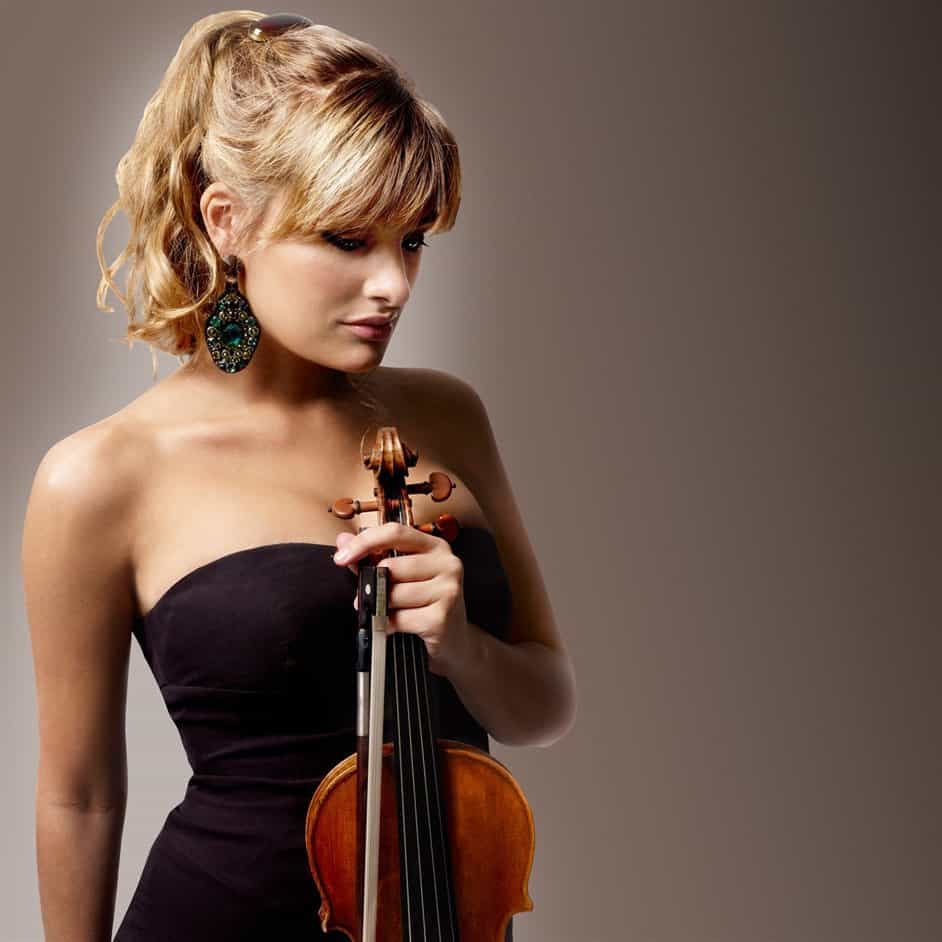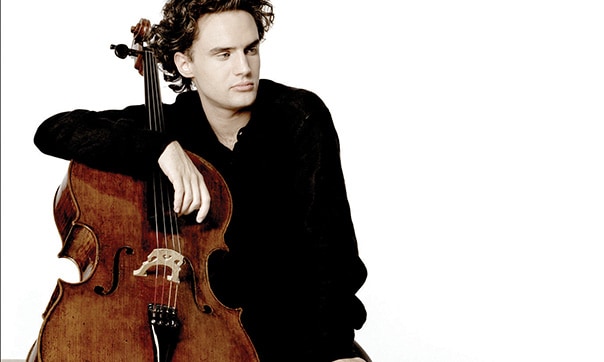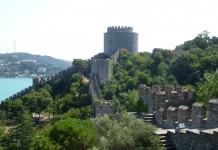The March 13th program of the Borusan Philharmonic Orchestra, featuring Nicola Benedetti on the violin and Leonard Elschenbroich on the cello, was a program that I had been looking forward to for months. It put together my two favorite instruments on the same program, the cello and the violin, both played by soloists with impressive biographies.
Even though I was excited about the program, the news of the day before still lingered in my mind, and I was feeling guilty as I took my seat in anticipation of an evening of fine music. Little Berkin Elvan had passed away the day before, and would no longer, ever, have a chance to experience such musical joy or mastery. Berkin was apparently also in the minds of the entire orchestra and organizers. The lights dimmed and a minute later, all members of the orchestra, as well as Borusan officials, were lined up along the stage. One took the mic and said “Every single note that we play tonight will be in honour and deep respect of those who are no longer with us.” As the orchestra members took their seats amid heartfelt applause, I too dedicated this evening to the memory and soul of Elvan.
Then in came the soloists: Nicola Benedetti on the violin and Leonard Elschenbroich on the cello. Unlike in many a case for other artists, Nicola Benedetti was just as young, pretty, and graceful as in the program booklet photo. True, not of relevance to her talent and the music, but it was an observation that I am sure all in the audience made as she took her position on the stage. Likewise, Elschenbroich was also a musician in his youth, and had he not the superb talent that we were to witness in the minutes to come, he could have easily found his calling as a teenager heartthrob.
Both Benedetti and Elschenbroich have impressive careers and histories. Benedetti began to play the violin at the age of four. By age eight, she was the hottest kid in the country, leading the National Children’s Orchestra of Great Britain as the youngest member among mostly teenagers, despite not even meeting the age threshold of nine. By age nine, she had passed all grades of musical exams, and by age ten, she was a student of the violin legend Yehudi Menuhi. At twelve, she had performed before Prince Adward of England, and, last year, at age twenty-five, she was appointed to the Member of the Order of the British Empire for her services to music and charity.

Elschenbroich, just two years Benedetti’s elder, is an accomplished cellist, a peer of Benedetti from their years at the Yehudi Menuhin School of Music, and, as I was later to find out, also her beau. He is considered one of the most promising of young musicians, and has received many awards, -including the Leonard Bernstein Award in 2009. He received invitations to perform alongside stellar conductors such as Valery Gergiev and been selected to be the BBC New Generation Artist of 2012,. He has toured the world over and performed with such great orchestras, including the London Philharmonic, the Konzerthaus Berlin, the Chicago Symphony, and even the philharmonics of Buenos Aires and Japan! He has performed the complete Beethoven sonatas with the phenomenal pianist Christoph Eschenbach.
Benedetti and Elschenbroich start performing. The notes, the sounds coming out of the instruments are phenomal, and a glance at the program info reveals that Benedetti is performing on a Gariel Stradivarius of 1717, while Elschenbroich’s cello is a work of Matteo Goffriller “Leonard Rose,” dating back to Venice of 1693. Each one is worth millions of dollars, and they do sound their worth.
The Double Concerto, in A minor, Op. 102 starts off in a festive mood, with a solo cello on a sole existence of its own. The flutes come in, followed by a subtle violin leading to a solo. Then the interplay of solos builds up into a duet backed up by the full orchestra and winds. There is an interplay of the violin and the cello, with the orchestra creating the mood, spirit, and the setting of the duet, and acting as a catalyst for the two sounds. The music is passionate, dramatic, and full of feeling. More pizzicato, a culmination of the violin and cello duet, and the first movement, in allegro rhythm, ends.
In the second andante (“slow”) movement, we are treated again to the harmonious fusion of the violin and cello, with a piannissimo string background. It’s a beautiful piece, perhaps a sad one, but one that still holds on to hope. The winds come in, the strings orchestra builds it up, and the solo violin and the solo cello are in a continuous interplay of musical dialog. The orchestra’s pizzicato is gentle in the background, there is a breath of winds, and the amazingly beautiful movements comes to an end.

The third movement, in allegro-non molto (“fast, not very”) meter, has the perfect rhythm and pace, leading to a dynamic violin solo, and then attention-worthy synergy between the violin and the cello. The cellos, winds, and first and second violins have their own moments of highlights, but the focus is on the solo parts. The cello and violin interplay the main theme, which is then intertwined with the winds, and built up until the full orchestra is in full swing. Crescendos, acceleration, drum rolls, and finale! And, the audience applauds in awe of the two young stars, and in appreciation of the talent of Brahms brought to life so well by the Borusan Philharmonic.
It’s intermission time, but the evening is not yet half over! The second half is to feature Bruckner’s Symphony No. 8 in C minor, nicknamed “the Apocalyptic.” An 80-minute long piece that has a low, mature, or settled tone. In the allegro movement, the winds and brass take turns on the melody, with a barely audible piannissimo tremolo (“very soft vibrations”) coming from the strings. A grandiose mood follows, crescendoing to drums, bass and a brief thunderstorm, and diminuendo’ing back to the winds. The scherzo movement is the one I am looking forward to, with the promise of a lot of energy and rhythm. As expected, this piece is upbeat, energetic, with percussion, brass, winds and string tremolos. The notes of the harpsichord feel like trinkles of water, and the final notes somehow remind me of the end of Tchaikovsky’s 1812 Overture. In the third adagio (slow) movement, drama meets symphonic composition. The five double basses provide a thunderous background, accompanied by the trombone and trumpet. Loud cymbals, the harpischord, the tuba, and the entire strings orchestra. It’s all there.
The final movement comes in an hour into the piece. It is a harmonious but sturdy one. Bass, drumrolls, tremolo, the entire ensemble of winds and percussion accompany the strings as the piece accelerates. Then, as opposed to an expected crescendo peak and finale, it diminuendos for a subtle end. The subtlety of the finale keeps the noble, largo mood of the piece lingering in our minds… and perhaps that it is this lingering that has carried the piece to this day. It does not offer a precise poignant end, but diminishes into an eternal noble linger, much like the memory of those to whom this evening has been dedicated…










